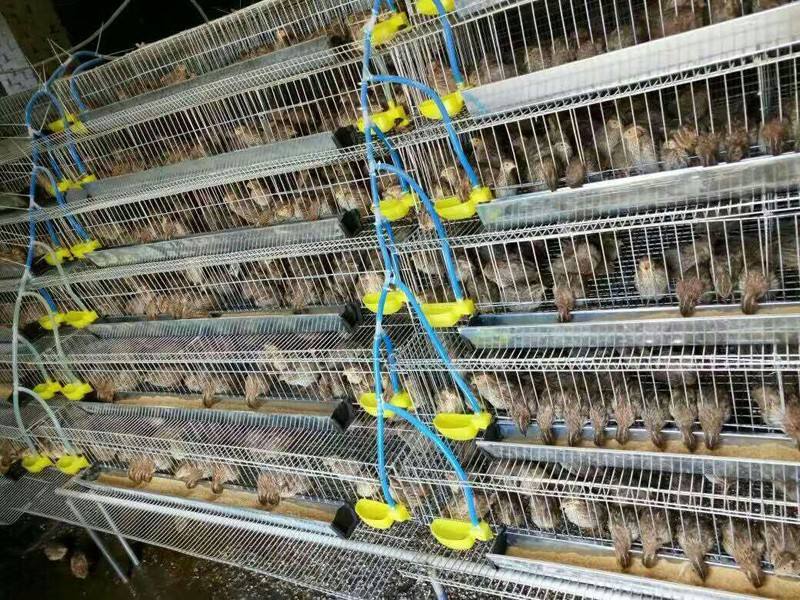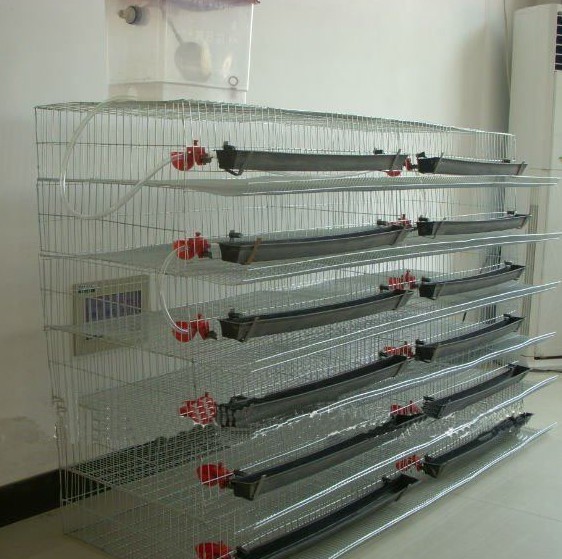

This was our case when we began our quail journey. Many times, homesteaders already have rabbit hutches on hand when they get their quail. Most often used on our homestead, rabbit hutches are a great option to house quail. You can build your own quail cages out of wire, or you can purchase plastic ones online. This is the best way to help save on feed, as quail can be quite messy feeders. Many quail keepers will add a feeder on the outside of the cages so that the quail can’t make much of a mess in the feeder. The one bad thing about quail is that they poop a lot, and their poop definitely stinks! Oftentimes the cages allow feces to fall into a dropping tray below the cage, letting the quail remain clean at all times. Photo courtesy of Kelly Bohling.įor commercial growers and people living in tight spaces, these quail cages are your best option. Also, the more quail there are in a confined space, the less they’ll pick on each other. While this caging system seems small, the truth about quail is that they enjoy living in smaller spaces, as it makes them feel more safe and comfortable. The most common size is 15 inches high by 18 inches wide, with a slanted floor so that the eggs can roll to the front egg tray that sits outside of the cage. You can generally fit five to ten quail in one quail cage, depending on the size. Oftentimes you’ll see quail in small cages, which are probably the most common quail habitat. And a dust bathing area is always a necessity. Wire flooring is always best, because it allows them to excrete feces onto the ground and not walk around in them.

Your habitat should be completely predator proof, no holes where predators can get in (even tiny ones). Whatever habitat method you may choose, keep in mind that quail are extremely fragile creatures that require routine checks no matter the habitat. But with regenerative agriculture growing in popularity, quail can even be kept in pasture quail tractors as well, much like pastured poultry! In days of old, quail were kept in small cages, as they can be today. Believe it or not, there is a wide range of options for the modern quail keeper. Now that we’ve talked about the basics, I want to share with you my three favorite types of quail habitats. We know this firsthand, and it is an incredibly disappointing thing to discover. If a squirrel, mouse, rat, or other rodent can get into the hutch, they will most certainly wreak havoc on it and the quail within your structure. The cocks will fight, so keep that in mind when you’re setting up your habitat and putting together your breeding pens.Īnd finally, make sure your structure is completely enclosed with wire or another type of sturdy material. Make sure you have a ratio of 3 to 5 females per male. You should also ensure that they have a dust bathing area in their habitat. This makes them feel much safer in their environment.Īs with any animal, make sure your quail have access to plenty of feed and water throughout the day. Add tree branches, rocks, and other things that they can hide behind, under, and near. Keep in mind that quail are ground birds in their natural habitat, and quail are still very much wild in character, not domesticated. Yes, even if your quail are in a cage or hutch. The next basic is an easy fix––make sure your quail have ground cover. If the ceiling is too high, or not high enough, they will soar themselves right into the ceiling and break their necks. The reason for these heights is that quail have a natural instinct to shoot into the air like mini rockets whenever they’re startled or afraid.

If you’re creating a walk-in pasture raising type system, the habitat should be at least your height and then some (about 6 feet tall or higher). As an example, if you’re keeping quail in cages or hutches, the maximum height of your habitat should be about 12 inches, though some people like to go up to 18 inches. There are a few basics you need to know before getting started on your quail habitat.Īs a general rule of thumb, your quail housing either needs to be fairly short or extremely tall. But don’t worry, there are options for you when considering which habitat might work best for your property. If a quail’s habitat is not to a certain standard, it can be detrimental to your quail-raising projects. One of the most important things when it comes to keeping quail, however, is their habitat. Some people even keep quail in apartments and on balconies––they’re truly that easy to tend to! Quail are an incredible meat and egg source, especially if you live on a small property. The number of homesteaders keeping domestic quail is growing by leaps and bounds. Amy Fewell helps you set up the right kind of habitat for your quail.


 0 kommentar(er)
0 kommentar(er)
